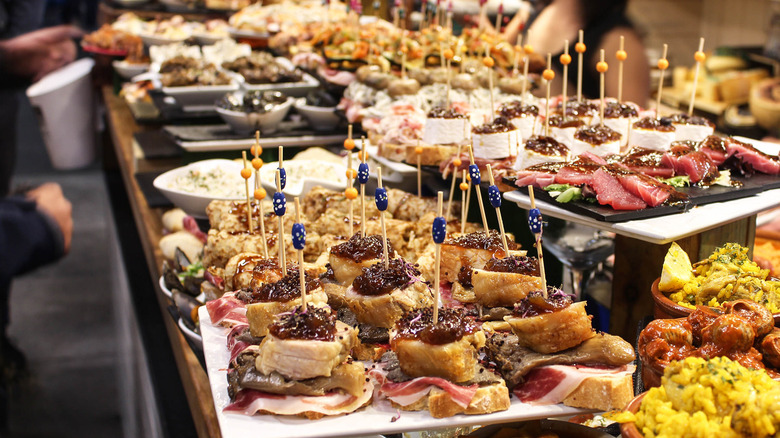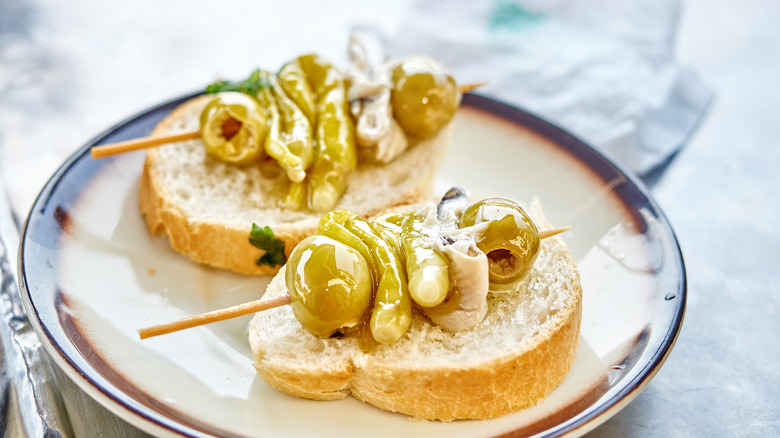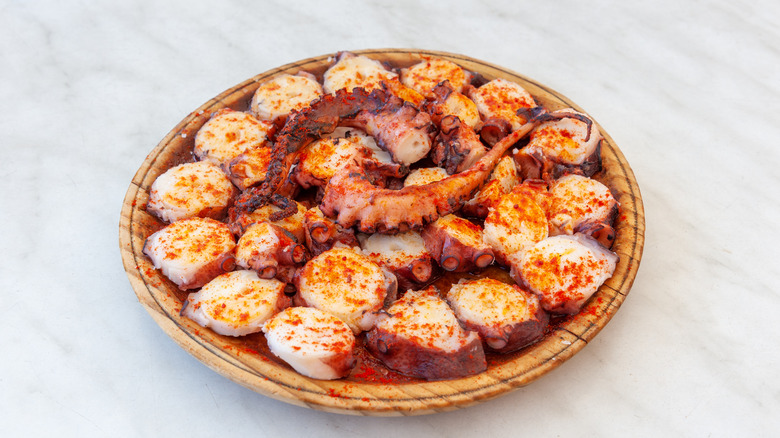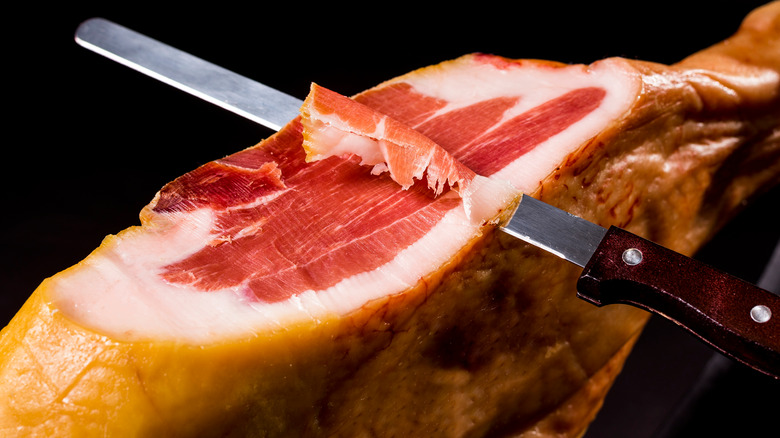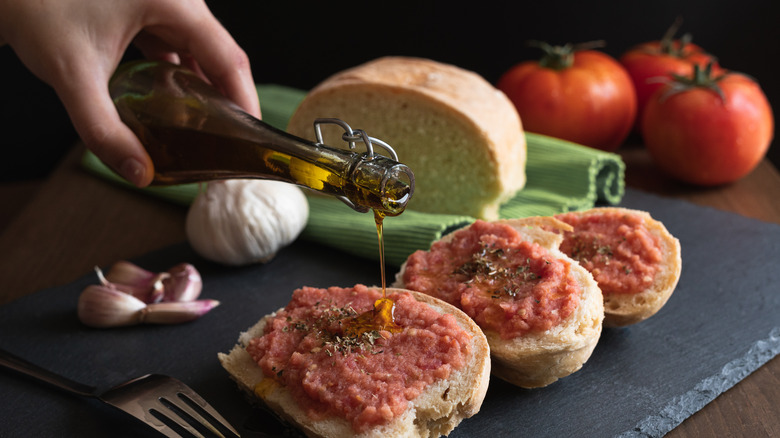How Tapas Are Served Differently In Each Region Of Spain
Thanks to global chefs, travel, and enthusiastic foodies, it's not too hard to try flavors of the world locally. If you haven't made it to Spain, chances are that Spain, or more specifically Spanish food has made its way to you. Known to be one of the most exciting culinary styles in the world, Spanish cuisine is often amassed into one category: tapas.
Though it's generally understood that tapas entails small plates of food, Madrid Food Tour explains that each region in Spain specializes in its own, based on its unique abundance of ingredients and culinary history. Coastal cities boast fresh seafood; cheese, ham, and olives are prized all over; and local wine and spirits make a regular appearance.
Besides enjoying tasty food, going for tapas is more than just a culinary experience. Informal socializing at the end of the day is a large part of the tapas culture, and Spain Holiday remarks that Spaniards even have a verb for the event: tapear.
Pintxos in the north
The Basque country in the north tends to imbue their own style to everything they do and tapas are no different. Here, they are called pintxos and are commonly served on skewers. One popular example is a gilda, a skewer with an anchovy, olive, and hot pepper (via Spain Info). Another typical pintxo is a piece of bread piled high with an ever-changing selection of ingredients, often starring cod. According to Proper Spanish Tapas, the Basque country also specializes in dairy and heartier bites to counter the cool climate. Dig into some cheese, and enjoy it with the local, slightly sparkling Txakoli wine.
Seafood influences along the coast
Spain has a diverse coastline, which is more than evident in its tapas. On the northwestern coast, Galicia is home to one of the country's top delicacies. Pulpo a la gallega might be more exotic than your usual bar fare, but boiled octopus with olive oil, salt, and paprika is a mainstay (via Spain Info).
Across the country, shrimp gets an equally simple preparation in the dish gambas al ajillo, where shrimp are quickly pan-fried with plenty of garlic, chili, and olive oil. In Andalusia on the southern coast, Do Travel describes lightly battered and fried squid with lemon as the ultimate bar snack. A few quality ingredients turn simple combinations into mouth-watering dishes.
Ham and cheese galore
Aside from plenty of delicious seafood, it's no secret that ham, particularly Jamon Iberico, is one of the top delicacies in Spain. Thinly sliced, it is served in many styles, including the luxurious Pata Negra. For the best of the best, Devour Madrid recommends trying it in Extremadura.
You're also definitely going to want to enjoy manchego cheese at the source, and Castilla La Mancha in central Spain is the place to do it. Regardless of where you go, cheese is a constant. Just try the local fare and you're sure to be in for a treat.
Mediterranean flavors in Catalonia
The Mediterranean influence is clear in Catalonia, and fresh markets do a good job of highlighting local produce. Spain Info describes the simple classic pan tumaca — bread with tomato, olive oil, garlic, and salt. It might sound ordinary but fresh ripe tomatoes make all the difference. Barcelona is a hot spot for tapas tours, so if you're visiting and want to experiment with a variety of dishes, join in until you can't take another bite. The complex variety of dishes and influences makes Catalonian food ideal for serving with a refreshing glass of local Cava, Spain's answer to champagne.
Common tapas across the country
It's hard to go far in Spain without coming across the tortilla, which Spain Info describes as an omelet-like dish made with eggs, potatoes, and occasionally onions. It's ideal for soaking up drinks, and it's definitely one of the more filling options. Spain Info also points out that you're likely to find patatas brava, spicy fried potatoes, cured ham, cheese, and olives all over the country. Another among many fried favorites are croquettes, little breaded balls stuffed with ham, cheese, and béchamel sauce.
The coastal influence can be noted across the country, and Do Travel indicates that anchovies marinated in vinegar, garlic, and olive oil are commonly served. Meat is equally important to the Spanish diet, and the source notes that albondigas, meatballs in tomato sauce, are also regulars on the tapas scene.
Across Spain, cold beer, local wine, and fun drinks like sangria make up the rest of the tapas experience.
